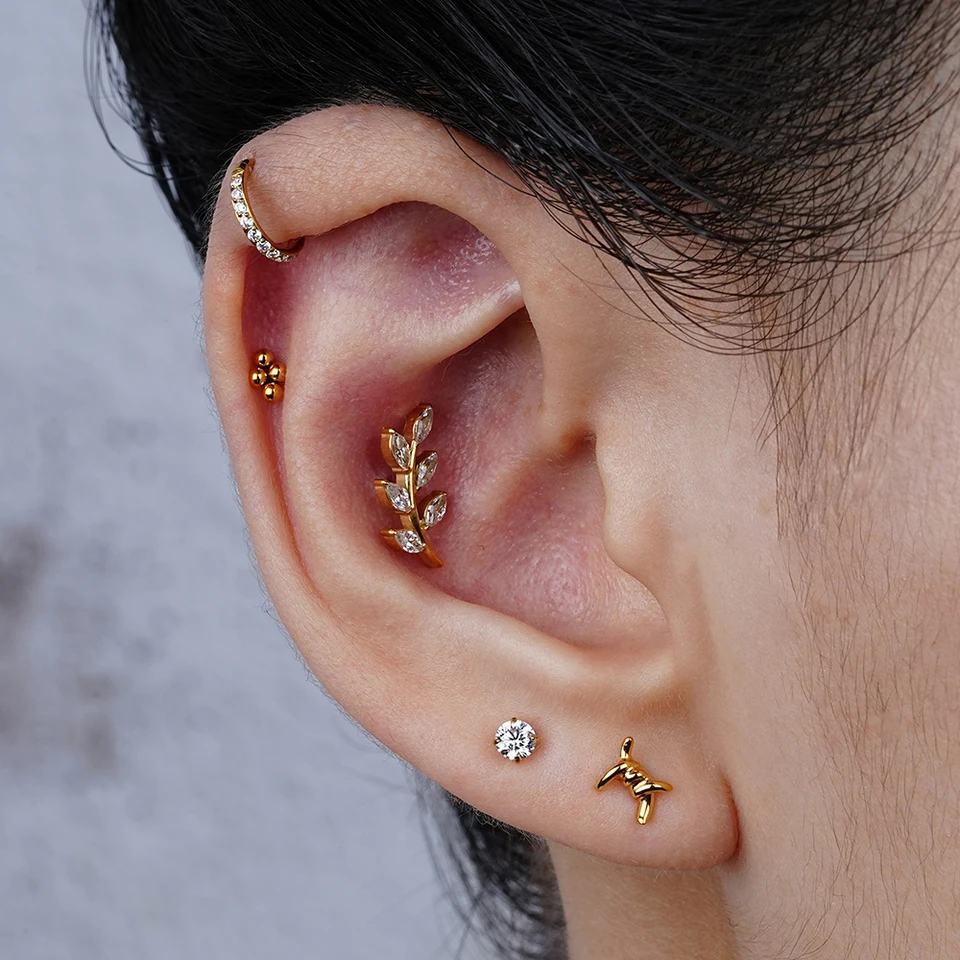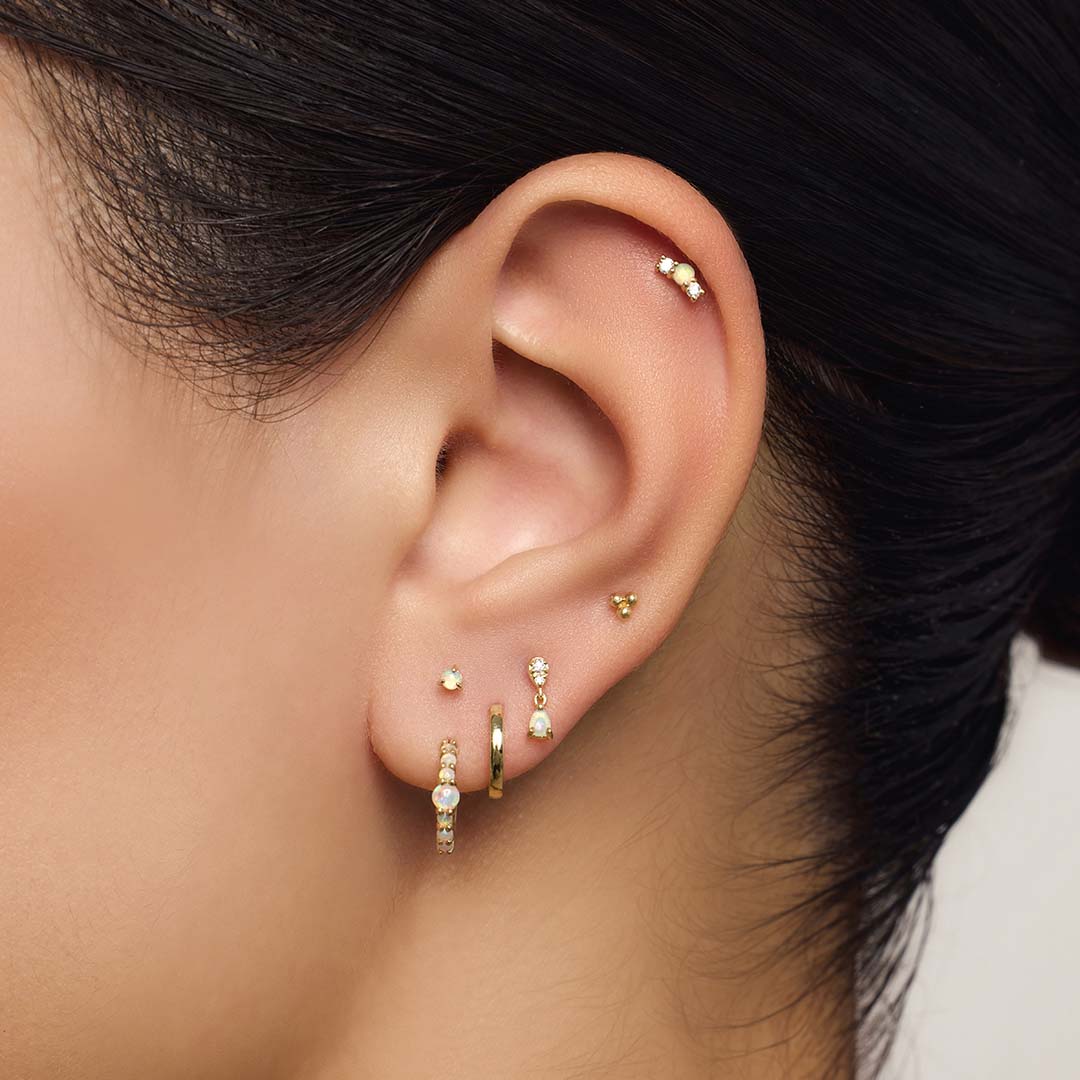What to Expect in Ear Piercing Costs and Aftercare
Ear piercing is a popular form of body modification that has been practiced for centuries. Whether it's a simple lobe piercing or something more elaborate, such as cartilage Ear Piercing Cost in Dubai, this procedure can be both a personal and aesthetic choice. While the experience can vary depending on where and how you choose to get it done, it is important to understand what to expect in terms of costs and aftercare. This knowledge will ensure you are well-prepared for the entire process, from the initial piercing to the healing period.

Understanding Ear Piercing Costs
The first consideration when getting an ear piercing is the cost. The price of ear piercings can vary based on a variety of factors. Some of the primary considerations that influence the cost include the type of piercing, location, and any additional services offered. However, it's important to note that the price is not always indicative of the quality of the procedure or the experience itself.
The simplicity or complexity of the ear piercing you choose will have an impact on the cost. For example, a standard lobe piercing may be relatively inexpensive compared to more intricate piercings, like cartilage or helix piercings. The time, skill, and tools required for different types of ear piercings often contribute to variations in pricing.
Aside from the type of piercing, the materials used for the jewelry can also affect the cost. High-quality, hypoallergenic materials like titanium or surgical steel might cost more than other alternatives, but they are also more likely to reduce irritation and prevent infection.
Factors Influencing the Cost of Ear Piercings
While understanding the costs is important, it is also essential to recognize that there are multiple factors that contribute to the pricing of ear piercings. Here are a few:
-
Piercing Location: The geographical location where you get the piercing can play a role in the overall price. Different regions may have varying standards and expectations for piercing services, which could lead to higher or lower prices.
-
Jewelry Quality: If you opt for a specific material for your jewelry, such as gold, platinum, or sterling silver, this will likely increase the overall cost. Some places may offer an array of jewelry choices, allowing you to select something more personalized and luxurious.
-
Service and Technique: Some locations may offer specialized services or advanced piercing techniques that require additional expertise. If the piercer uses a unique method, such as using a needle rather than a piercing gun, it could impact the price.
-
Experience Level of the Piercer: An experienced and well-trained piercer may charge a premium for their services, knowing that their expertise can minimize complications and provide a more comfortable experience. While choosing an experienced piercer might cost more, it could help ensure a safer and smoother procedure.
Aftercare for Ear Piercings
After getting your ear piercing, proper aftercare is crucial to ensure that it heals effectively without complications. Following the aftercare guidelines not only helps reduce the risk of infection but also minimizes discomfort and promotes faster healing. Here is what you can expect when it comes to taking care of your ear piercing after the procedure.
Cleaning the Piercing
Keeping your piercing clean is one of the most important steps in the aftercare process. Gently clean the area around the piercing using a saline solution or an antiseptic solution recommended by the professional who performed the piercing. It is important to avoid using alcohol or hydrogen peroxide, as these substances can be too harsh and may irritate the area.
You should clean the piercing at least once or twice a day during the healing period. Always use clean hands or sterile gauze when touching or cleaning the piercing to avoid introducing bacteria.
Avoiding Irritants
During the healing process, you need to avoid certain irritants that can delay recovery or cause an infection. Avoid swimming in public pools, lakes, or hot tubs, as these can introduce bacteria into the piercing. Additionally, refrain from touching your piercing with dirty hands. You should also avoid exposing the area to hair products, makeup, or any other substances that could potentially cause irritation.
Sleeping Positions
While you may not think about it often, the position you sleep in can affect the healing process of your ear piercing. Sleeping on the pierced ear can put unnecessary pressure on the jewelry and irritate the area. It is a good idea to sleep on the opposite side or use a pillow that supports your head without pressing down on the piercing. Using a travel pillow or a donut-shaped pillow can provide additional protection while you sleep.
Swelling and Tenderness
It is common for new ear piercings to be slightly swollen and tender for the first few days after the procedure. This is a normal part of the healing process. If you notice significant swelling, discomfort, or an unusual color change around the piercing, it may indicate an infection, and you should contact a professional for advice.
While some swelling is expected, the discomfort should subside after a few days. If you experience persistent pain or any concerns about the healing process, it is essential to seek guidance from an experienced piercer.
Jewelry Maintenance
Keeping the jewelry in place is crucial during the healing period. Never remove the jewelry until the piercing has fully healed. If you remove the jewelry too soon, the hole may close or become misshapen. Additionally, avoid changing the jewelry yourself unless directed by a professional. The material of the jewelry should be compatible with your skin, and if you experience any allergic reactions or irritation, it may be necessary to switch to hypoallergenic materials.

Healing Time
The healing process for an ear piercing can vary depending on the location and type of piercing. Generally, a standard lobe piercing can take around 6-8 weeks to heal completely, while cartilage piercings may require 3-6 months for full healing. It is important to be patient during the healing period and not rush the process.
During this time, it is vital to avoid any activities that could potentially disrupt the healing process, such as excessive touching, changing jewelry too early, or exposing the piercing to potential irritants.
Conclusion
Getting an Ear Piercing Cost can be an exciting experience, but it also comes with responsibilities in terms of costs and aftercare. By understanding what to expect in terms of pricing and how to care for your piercing after the procedure, you can ensure that the process goes smoothly and that your piercing heals safely. Always follow proper aftercare guidelines, and remember that patience is key when it comes to the healing process. With proper care, your new ear piercing can be a beautiful and long-lasting addition to your appearance.












